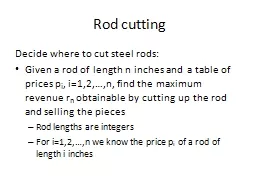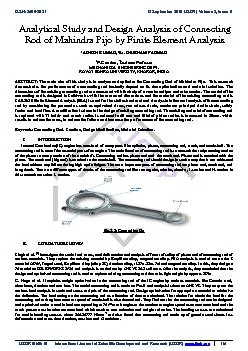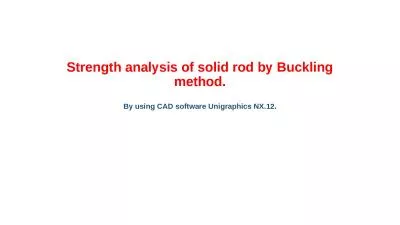PPT-DESIGN AND ANALYSIS OF CONNECTING ROD WITH DIFFERENT GEOME
Author : sherrill-nordquist | Published Date : 2017-09-23
PROJECT TEAM MEMBERS K SIVA RAMA KRISHNA Y LOKESWARA RAO R MANI KANTA S SATISH D NETAJI ABSTRACT The automobile engine connecting rod is a high volume production
Presentation Embed Code
Download Presentation
Download Presentation The PPT/PDF document "DESIGN AND ANALYSIS OF CONNECTING ROD WI..." is the property of its rightful owner. Permission is granted to download and print the materials on this website for personal, non-commercial use only, and to display it on your personal computer provided you do not modify the materials and that you retain all copyright notices contained in the materials. By downloading content from our website, you accept the terms of this agreement.
DESIGN AND ANALYSIS OF CONNECTING ROD WITH DIFFERENT GEOME: Transcript
Download Rules Of Document
"DESIGN AND ANALYSIS OF CONNECTING ROD WITH DIFFERENT GEOME"The content belongs to its owner. You may download and print it for personal use, without modification, and keep all copyright notices. By downloading, you agree to these terms.
Related Documents














